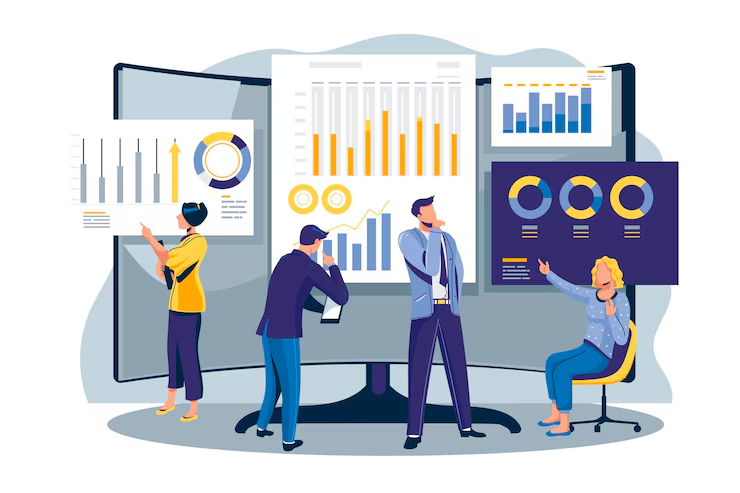To make sure that each company does well, achieves set targets, and keeps up with industry needs, each worker needs to perform in line with the company’s goals. Using tools like an Employee Performance Management System, you can boost the efficiency of your company.
Why Adopt an Employee Performance Management System (EPMS)?
Using a well-designed EPMS can help with
- Providing accurate and constructive feedback
- Align goals with company targets
- Receive regular and continuous feedback
- Increasing retention
- Identifying the future leadership team
- Establishing a fair process
- Boosting morale
Exploring Some Statistics
To better understand why EPMS should be deployed by most companies, let’s look at the below statistics:
- Less than half of the existing companies (only a mere 46%) have upgraded their employee reviews.
- Using consistent HR tools is prevalent among less than half the leadership teams.
- With proper reviews,
- Employee engagement can receive up to 70% boost.
- Turnovers stand the chances of being reduced by 14.9%
- Further, additional feedback is requested by 65% of workers.
Looking at the above data makes it clear that having an EPMS is essential for each company.
Benefits Received When Using EPMS
Some of the most notable pros that are observed with the use of an Employee Performance Management System include:
- Providing a boost to employee performance
- Motivated workers
- Increased worker engagement
- Adherence to goals
- Data driven decisions
- Mapping out career routes
- Identifying and bridging skill gaps
- Designing training programs
- Removing redundancies in performance tracking
Is Having an Employee Performance Management System Necessary?
Opting for software tools to aid the Employee Performance Management System ensures:
- A bias free reports and feedback method
- Establishing a timeline for tasks with real time data
- Increasing employee engagement
- Easy goal tracking
- Interactive and simple feedback and review process
- Less time spent on manual reviews
- Merging with existing HR tools and platforms
However, some drawbacks that people may face include:
- Reduced interaction between leaders and workers
- Having a tedious interface
- Data security, accessibility, and privacy issues for software tools deployed
Evaluating Employee Performance
Some of the top performance management systems can act as effective tools in evaluating the performance of your workers. These include
Exploring Top Performance Management Systems
While as an HRM you can deploy any of the tools or a combination of systems. However, some tools are proven to be more accurate and provide better tracking of workers than others. Among Gen Z workers, when a proper review is not provided, 73% may tender a resignation.
Hence, to improve performance tracking and management, it is essential to deploy the most effective tools. Some of these are:
Success Circles™
This custom method is one of the top performance management systems, accounting for the following criteria:
- Tasks completed,
- Targets achieved,
- Awards received, and
- Feedback obtained
By creating a visual analytical chart.
Using data entered vis-a-vis the above each employee is classified as per:
- Performance
- Leadership skills
- Development
- Communication
- Culture and brand
With inputs received over a period of time, each section gets more elaborate and accurate which lets team leaders and managers get a simplified, real time assessment of each worker.
9-Box Grid
Using a 3×3 grid that judges each achievement for employee potential, the 9 box grid can act as an effective HRM tool to:
- Identify workers with potential
- Identify training needs
- Design training modules
- Monitoring performance
- Chalk out career plans
- Identify successors
While this generates an interactive and detailed analysis, it also contains scope for bias. Further, it may or may not be data driven, thus being more of a qualitative analysis.
Performance-Values Grid
Designed by Jack Welch, this tool sorts workers into groups that define the potential:
- Top workers
- Solid employees
- Violators
- Non-contributors
The core aspects taken into account for an evaluation are:
- Execution
- Adherence to core values
360-Degree Feedback
Also known as multi-rater feedback, inputs are taken from various sources. These include:
- self-assessment
- team leaders
- managers
- peers.
These may be for completed tasks, targets, daily conduct, and others.
While the process is fairly detailed, it can open up the system to bias. Further, this tool is more common in evaluating middle management.
Picking the Right Software Tools
When you buy software tools to act as an Employee Performance Management System for your company, you need to first identify your business needs. Further, identify each HR process that you want to ease by using EPMS.
The software tool should fulfil each of the below criteria:
Further these should make it easy to evaluate and make decisions about:
- Bonus
- Promotions
- Assignments
- Skill training
- New job roles
- Train for leadership roles
To Conclude
With the rise of automated systems, it is simpler to deploy EPMS software to ensure a uniform and easy business process. With the older evaluation models, it was found that reviews were biased and workers hard to retain.
Employ the top software tools to create a fair system that creates an unbiased system that boosts morale.
Stay in touch to get more news & updates on Mystorieslist!
